If you want to start composting, it might surprise you to find out that there are actually a lot of different ways you can compost.
In this article, I’m going to go through ten different composting methods to help you determine which one might be right for you.
1. Open Air Composting
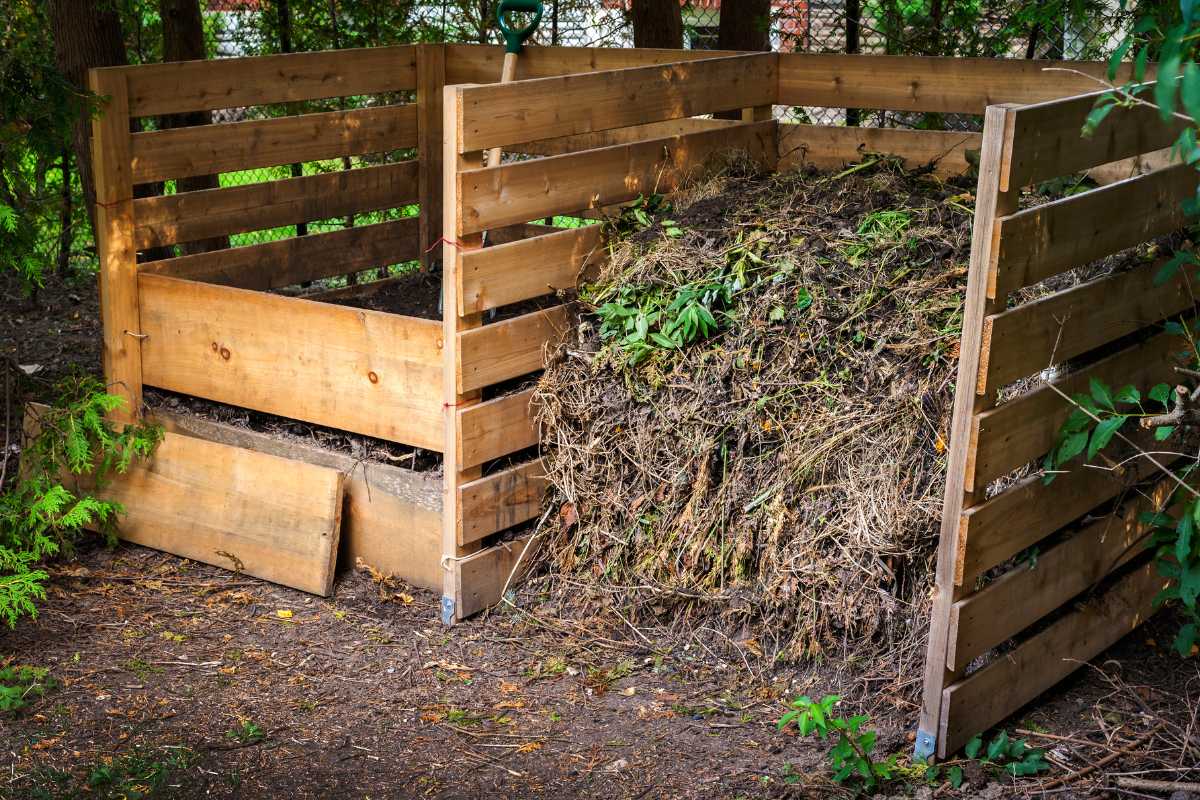
This is the most traditional composting process and the one that most people will be familiar with. It consists of having an open pile of organic material directly in your yard.
Usually, a bin is constructed to keep the sides of the pile neat, and this can be made of different materials. Designs using pallets or chicken wire are common, and are cheap to make.
You can really use anything you have. Mine is made of some old fence paneling and fence posts.
Open-air composting, also known as onsite composting, is generally known as a hot composting method. It relies on microorganisms and bugs to break down the organic matter at certain temperatures.
This method can produce compost in about one to six months, depending on what you’re adding to your compost pile, and how often you tend to it. It produces compost relatively quickly because it’s aerated static pile composting.
This is quite a low-maintenance form of composting, as you can just add materials and leave it to do its thing.
One of the main drawbacks of this method is that it can make for an unsightly mess if not done correctly. If you don’t cover up the pile when finished, then you’ll end up with piles of rotting food scraps all over your lawn.
The only thing to remember here is to add the right mix of wet (green) and dry (brown) compostable materials.
2. Direct Composting
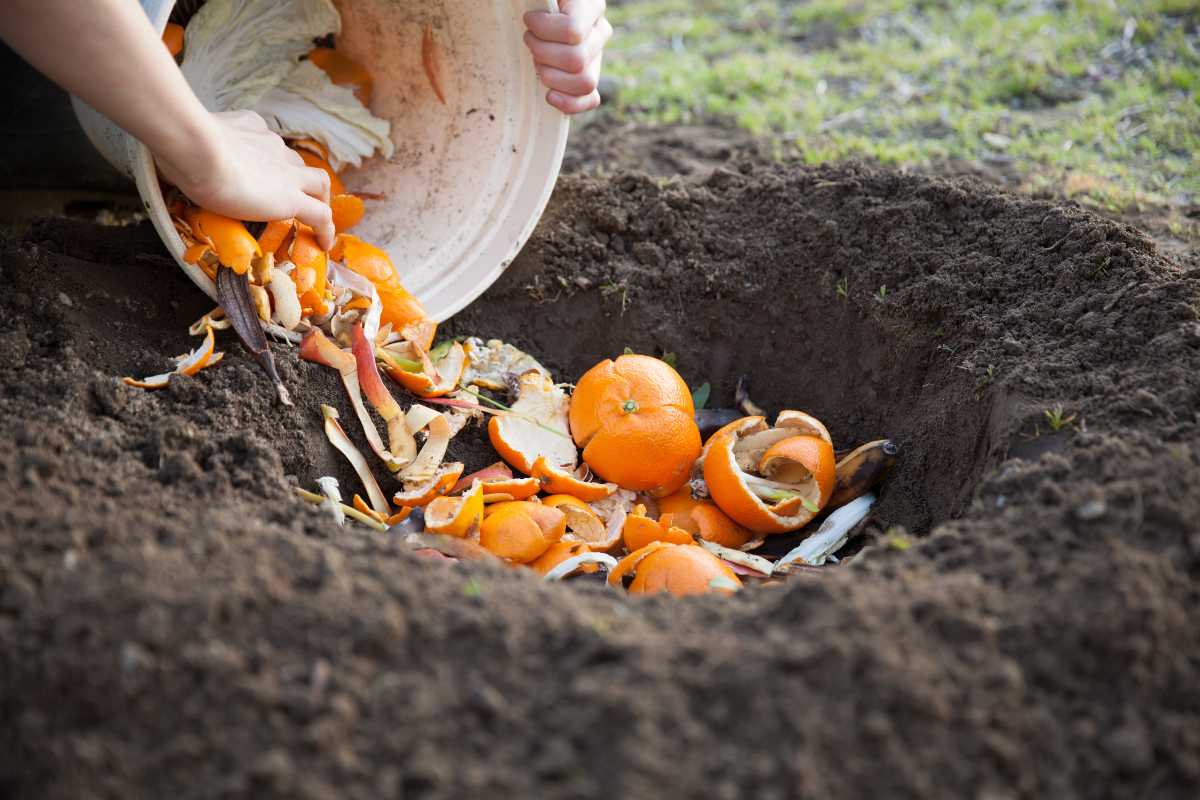
This is an old method of composting using anaerobic methods, and can be quite effective. With this method, you dig a trench and add the organic materials to it before covering it again with earth.
The only tool you’ll need to compost this way is a spade, so it is a cost-effective way of starting.
You can really only compost fruit and vegetable scraps, and some garden waste, but the food scraps attract worms that aerate and nourish the soil.
It’s best not to try to compost animal byproducts (animal manure) or large quantities of food scraps.
The downside of this method is that you are more limited to what you can compost, and it takes longer for the materials to break down. You will also need the space to be able to constantly dig out trenches to fill.
You can speed up the decomposition by cutting up all your organic materials into smaller pieces, but this is true of all composting methods.
- Related Article: Composting with Black Garbage Bags
3. Sheet Composting
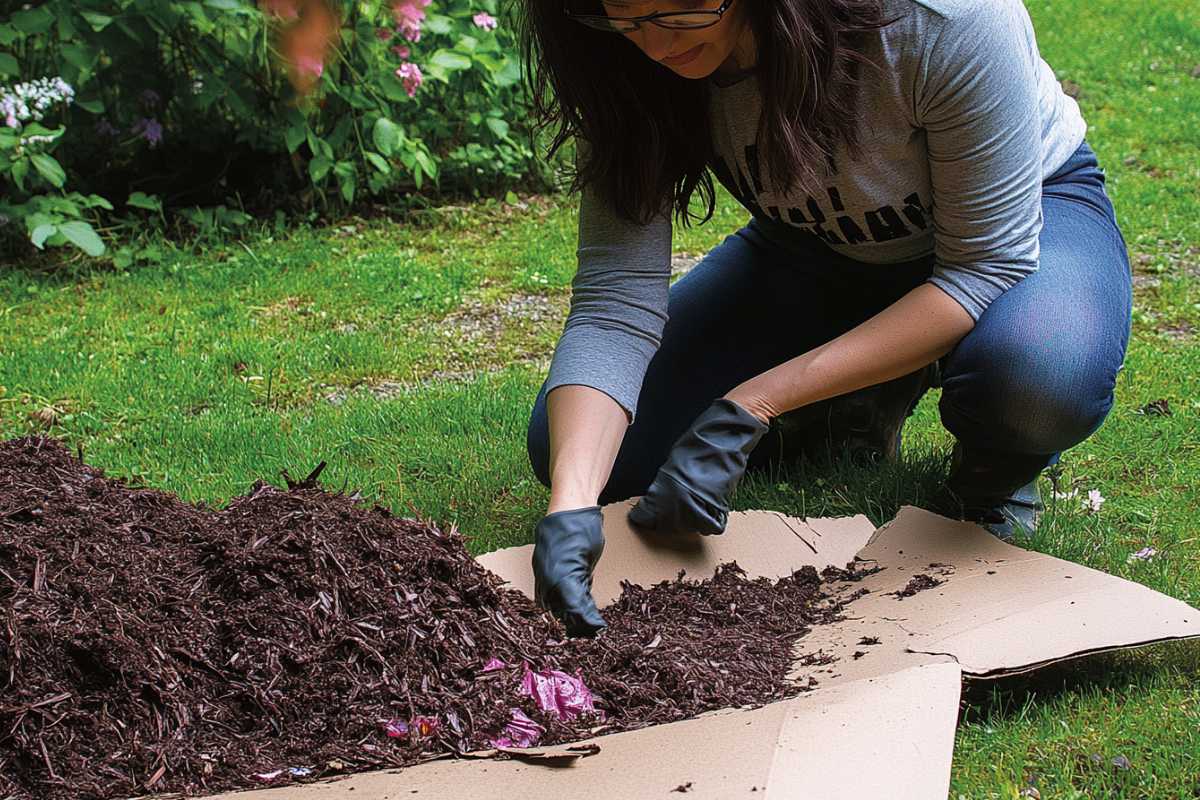
Otherwise known as lasagna gardening, this is a cold composting method that has been used throughout the world for centuries.
Sheet composting is great if you want to create raised beds. But it may be limited by the amount of waste you have, and how many raised beds you can make!
It is a little like open-air composting, but you won’t have to turn it or dig it out to add to your garden.
Steps on how to make a sheet composted raised bed:
- Mark out the area you want to use. Three feet wide is usually the best size, so you can reach the middle from both sides as you’re gardening.
- Scrape back any grass or plants to the bare soil.
- Loosen up the soil and remove any deep-rooted weeds.
- Cover the ground with a few layers of cardboard to smother weeds and as a bedding.
- Pour water on the cardboard until it is fully saturated.
- Cover with a one-inch layer nitrogen-rich material like manure or food scraps.
- Add a layer of carbon rich materials like straw, dry leaves or wood chips.
- Keep adding alternate layers of nitrogen rich (green) and carbon rich (brown) materials.
- Cover with burlap sacks and leave for around 6 months until it is ready for planting.
This method means you won’t have to dig and transport any compost, but it obviously has its limitation with size and large amounts of waste you want to compost.
4. Tumbler Composting
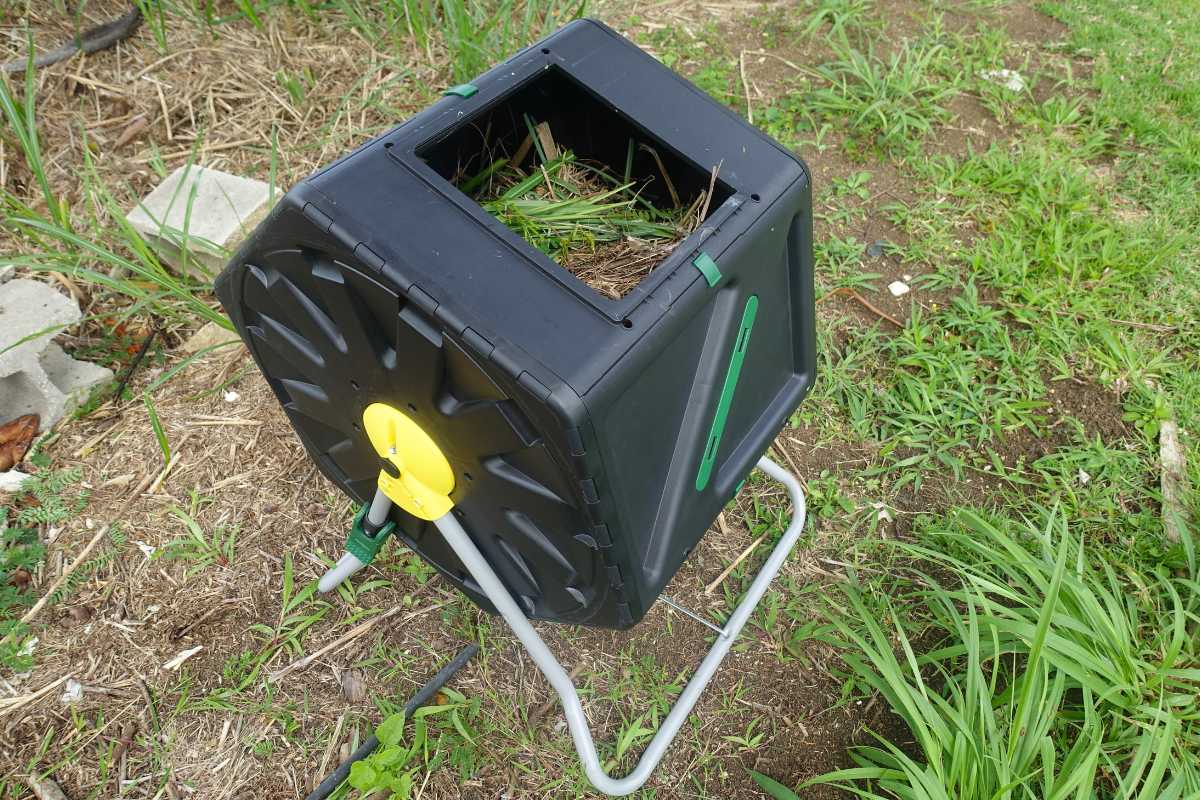
Tumbler composting is a form of hot composting that is relatively new. It consists of adding your organic materials to a sealed drum on legs.
Using a handle or hand-spinning the entire drum, you turn it regularly to mix up the materials and speed up decomposition. With the right conditions, you can get compost from these composters in less than a month.
These types of composters come in all shapes and sizes, and often you can get ones with two drums so you can add to one while waiting for the materials in the other to compost.
This is a good system if you’re planning on turning your compost regularly, as it is easier than turning a heap over with a pitchfork or shovel.
That being said, it still does take some strength to turn the tumbler, compost is heavy after all! You can get smaller ones that will be easier to turn, but the amount you can add to them is limited.
This type of composting might not be the best if you’re composting a lot of garden and yard materials, especially woody materials. You will need to cut the wood up before adding it to the tumbler, and these composters have limited space.
5. Worm Farm Composting (Vermicomposting)
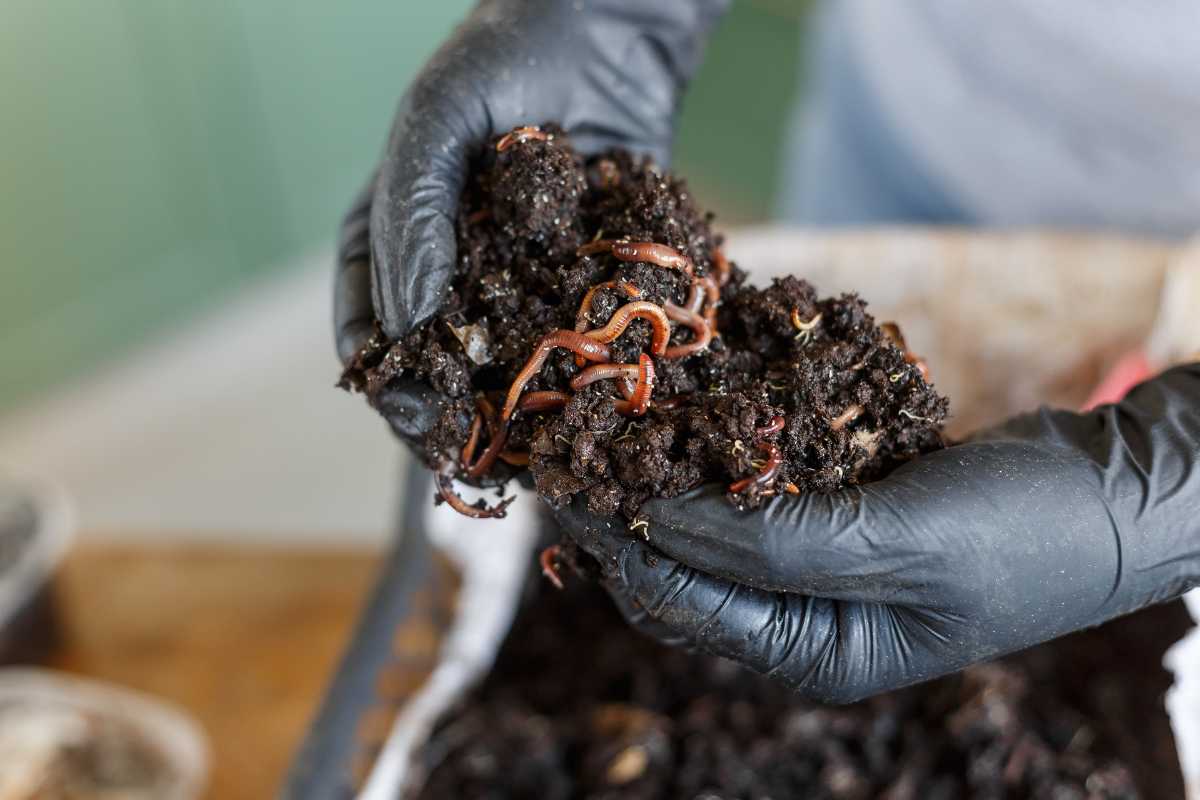
The Worm Farm composting method, also known as vermicomposting, relies on worms to break down the organic matter. Worm farms come in many forms, and have packages that can be used indoors or outdoors.
These commercially sold ‘farms’ are usually made up of a series of trays that you stack on top of one another. The worms work their way through the waste in the bottom tray, turning it into compost and worm castings.
The worms then move into the tray above, leaving the bottom tray to be removed and the finished compost to be used whenever. The now-empty tray is then filled with fresh waste and added back onto the top of the system, waiting for the worms.
What you can compost is limited with worm farms. Kitchen scraps are the main food source, but you can also add small amounts of shredded cardboard or paper. Some small green bits of garden waste like weeds will work too.
It can take several months for the worms to break down the kitchen scraps, so they aren’t really suitable if you have a lot to compost. A good byproduct of worm composting is worm tea, that can be used as a high-quality liquid fertilizer.
They are good if you’re interested in raising worms, and you’d like a small amount of compost to add to soil for houseplants. Raising worms and vermicomposting can be an educational activity for kids and the family.
- Read more about Choosing Worms for Composting
You can make a homemade wormery, and there are many plans for these on the internet. The benefit of making your own is that you can make your worm bins as large as you need.
These kinds of worm farms are usually emptied when they get full about every 3-8 months. Technically, open-air and direct composting could be classed as worm composting, as both methods allow worms access to the compost to help to break down materials.
But I would say, strictly speaking, a ‘worm farm’ is an enclosed area that only uses worms.
Worm farms should be placed somewhere sheltered, where it won’t get too hot or cold in extreme temperatures. Worms can be negatively affected by seasonal and climate changes, as well as direct sunlight.
If you are planning on using it indoors, then remember to keep it well-maintained to avoid unpleasant smells.
6. EMO Composting
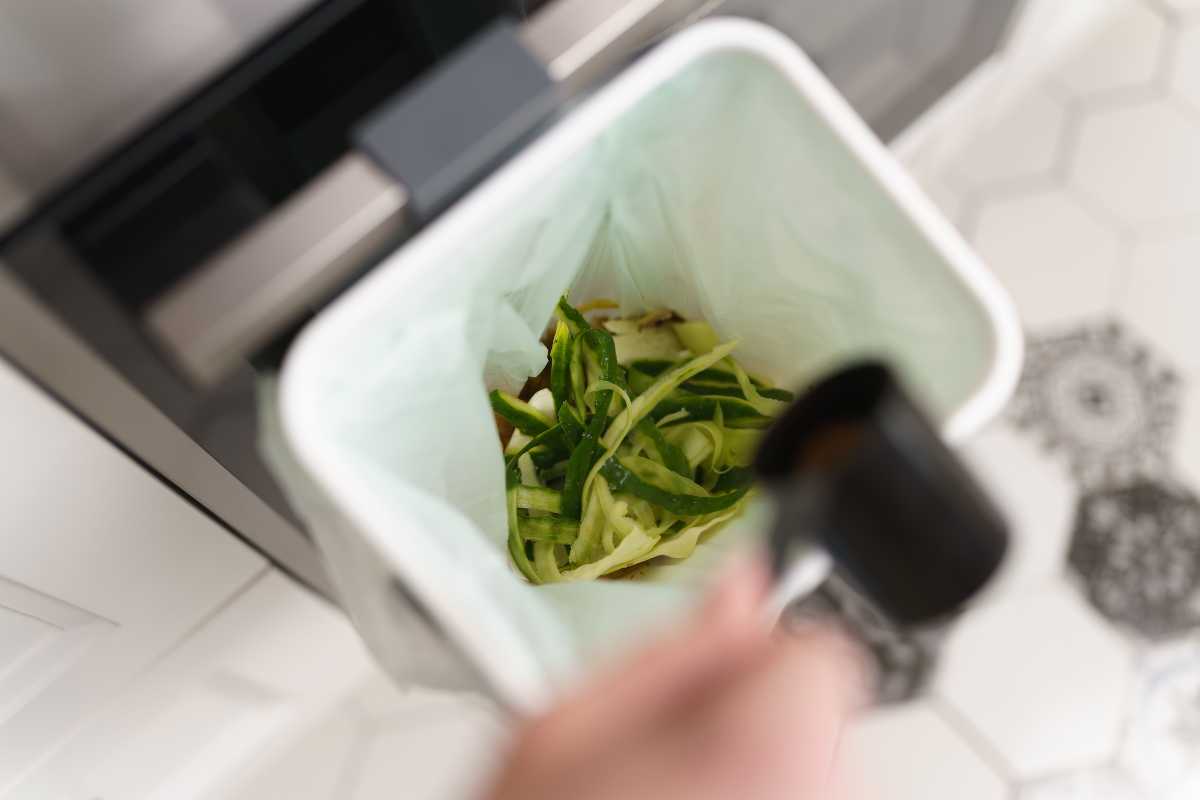
EMO stands for Effective MicroOrganism. It uses bacteria to break down organic matter, and is usually used as an indoor composting method.
The most popular EMO composter is the Bokashi system, but other EMO composters are available.
This method of composting entails filling a bucket with kitchen scraps and leaving it sealed for at least a week to allow bacteria to flourish and ferment the food waste.
The EMO compost system enables you to compost cooked food waste, which is not recommended for open-air or direct composting.
The buckets are usually designed with a tap at the bottom, so you can collect the juice and use it like compost tea. Here’s a great compost tea recipe.
This system does have its drawbacks.
- You need to keep the full bucket sealed for at least a week, meaning you need at least two buckets. This isn’t great if you’re short on space!
- You cannot use the end result as compost. You have to bury the waste after a week, somewhere not too close to plants, as the waste is acidic and may burn plant roots.
You can add it to your open-air compost heap, but make sure you cover it. If you want to expand what materials you can use with the direct composting method, then a Bokashi system will allow you to do this.
7. Trash Can Composter
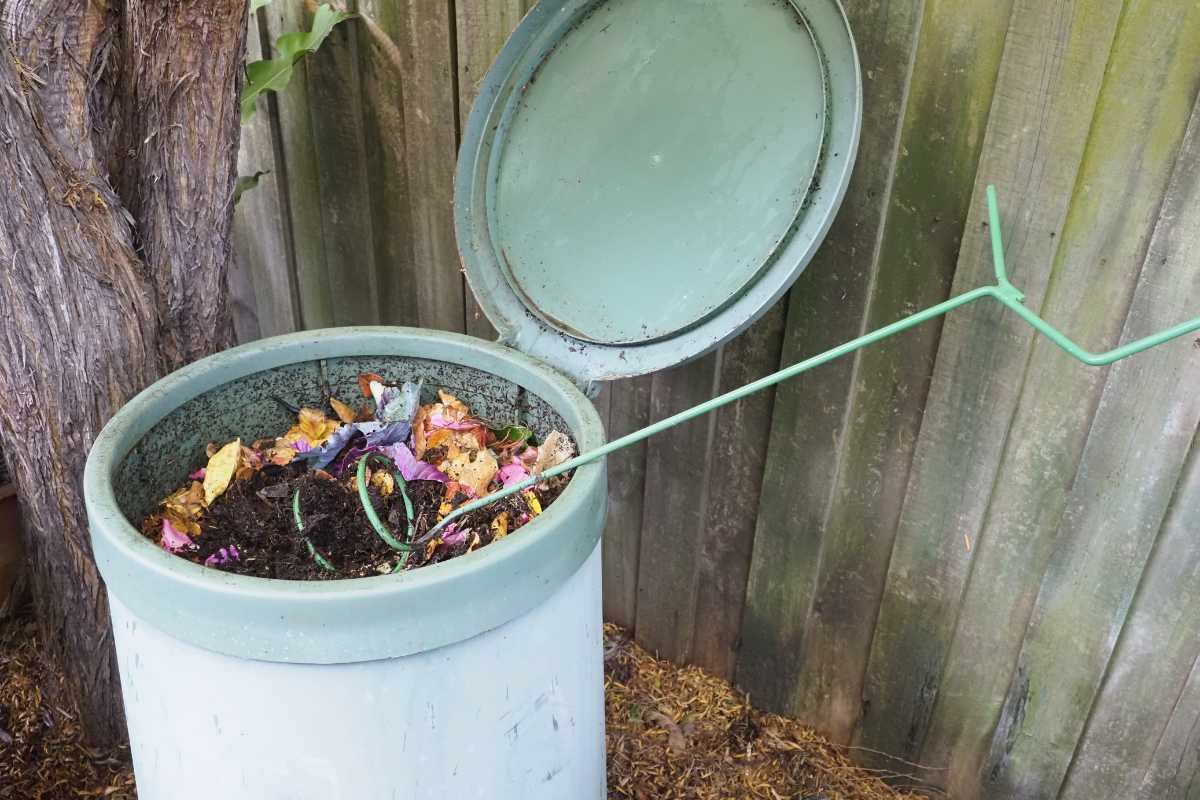
A trash can composter is a little like the open-air method. They can be made from old trash cans, or you can purchase them online.
The commercially available ones usually have a lid and have an open-bottom. Open the lid at the top to add compost ingredients. As it decomposes, the usable, finished compost will be at the bottom of the pile.
They will sometimes have a hatch in the bottom for easy access to the compost. That allows you to scoop out the finished compost easily.
This is a good option if you like the idea of open-air composting, but you’re put off by how unsightly a compost pile out in the open would look in your garden!
8. Combination Composting

Otherwise known as compot composting, this is a combination of open-air, direct, worm farm, and EMO composting.
A compot is a plastic pot with a lid with holes in the side, as well as a lid, and you bury it in your garden. You can add your organic matter to the pot, and it will be broken down by worms and flies.
Since the compot is already buried in the ground, the worms will bring the compost into the soil. You can just keep topping up the pot as space becomes available.
Because the pot is enclosed in the ground, you don’t have to worry about vermin accessing your waste. That means you can compost cooked food, oils and meats that you would otherwise not put in a compost heap.
They can be used above ground as well, like placing it on a balcony, although more nutrients will get into the soil if they are buried. The pots can also be used above ground, and can even be placed on a balcony.
Combination composting is a great all-rounder type of composting. It eliminates the need to turn over your compost, as well as dig it in. They are also below the ground, so you won’t even really notice they’re there.
One of the few downsides I can see is that you will not be able to use your compost as mulch. The bins are also quite small and more suited to green waste than browns.
However, you can conceivably have as many of these as you can afford dotted around the garden. So it is possible to compost a large amount if you cut larger ingredients into smaller pieces.
Learn more about composting underground with in-ground composting and trench composting methods.
9. Commercial Compositing
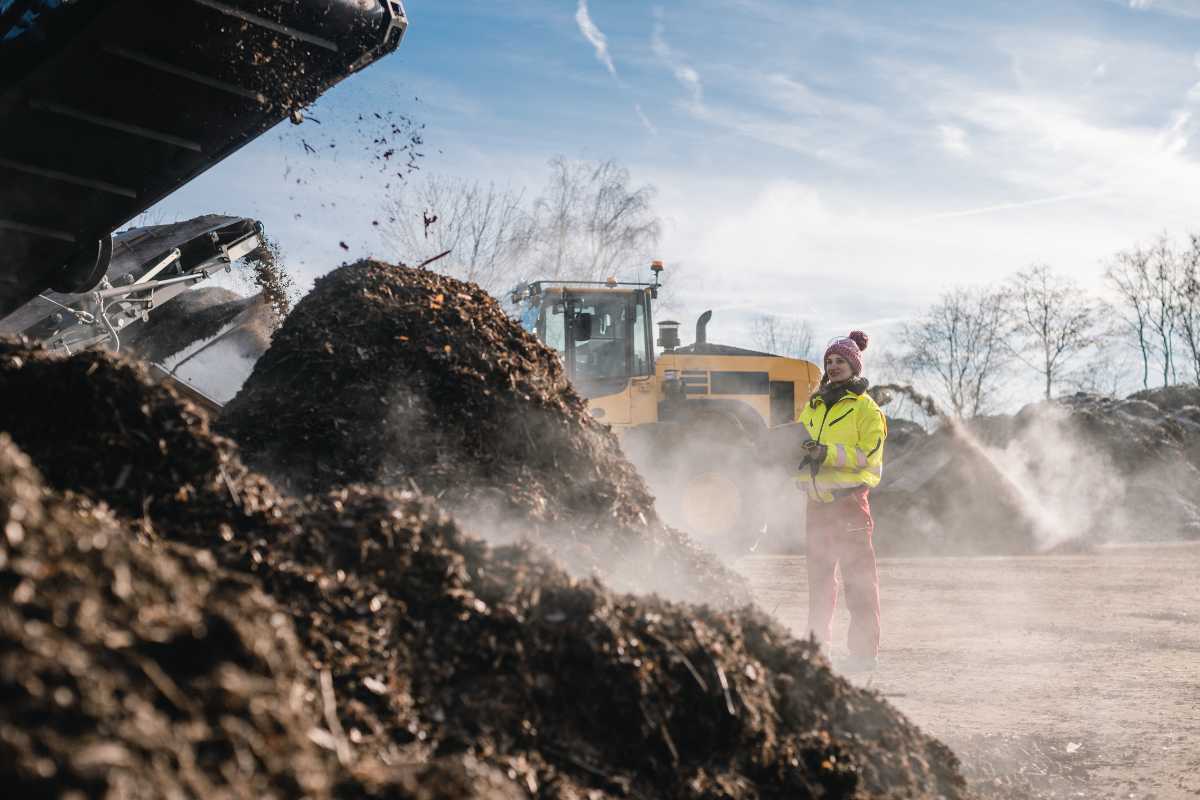
Commercial compositing is industrial scale composting of organic waste that is then sold to farms, nurseries or landscapers.
They usually work with restaurants and food outlets to collect large amounts of waste for composting.
Aerated (turned) windrow composting is a common way of large scale composting. Long rows of compost piles called “windrows” are created and aerated periodically by turning the piles.
This method often requires large plots of land, industrial equipment and a continuous supply of labor to maintain the composting process. It’s also a system that’s fine to use in cold climates.
10. Mechanical Compositing with Compost Machines
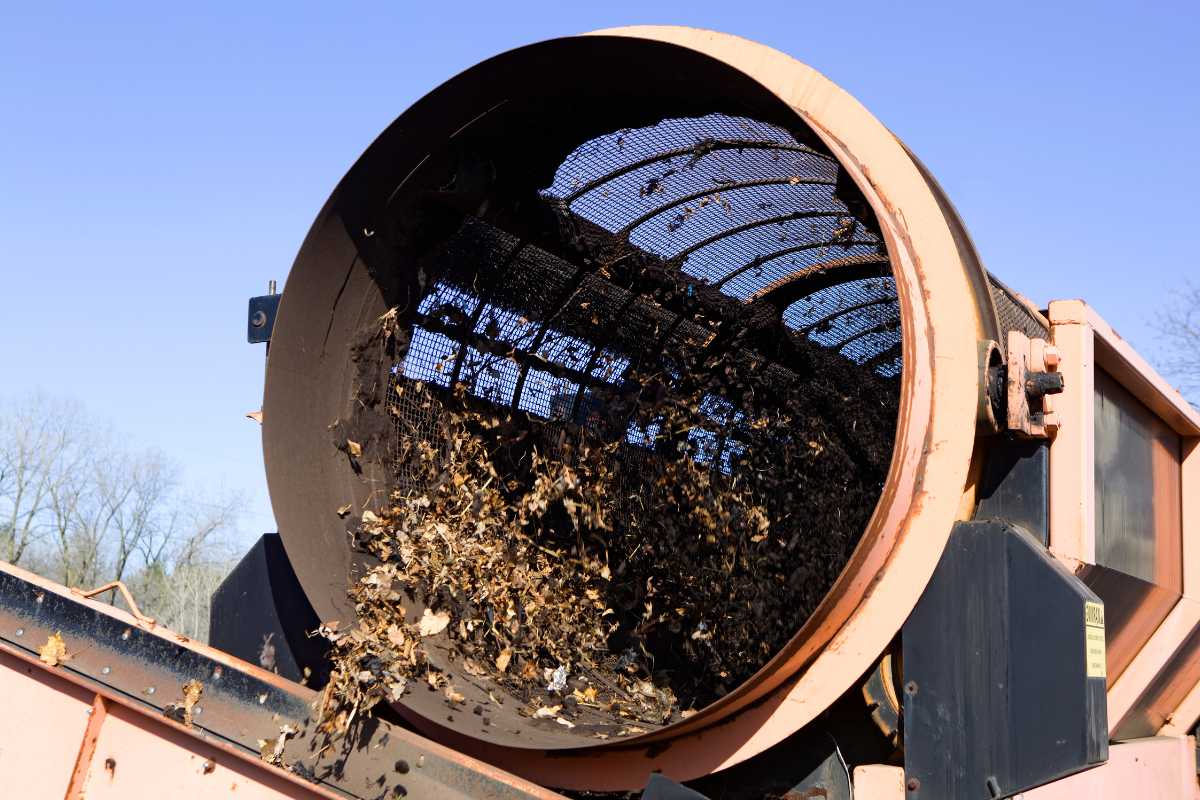
Mechanical composting with compost machines uses electricity to rotate the waste and generate the heat required for decomposition. Whereas microbial activity is what usually produces the heat in the composting process, electricity is used here.
Compost machines and this form of composting can produce usable compost in as little as 24 hours. These types of composter used to be only available to commercial composters due to the equipment needed, but now there are affordable compost machines for home use.
Learn more about Calculating Your Compost Needs.
The Right Composting Method For Me
I hope by reading this you have been able to learn a bit more about composting, and perhaps have found the method that is right for you.
Personally, I like the open-air method as a cost-effective way of composting a large volume of food scraps and lawn waste. I hide my compost pile behind a bush, but I do understand that not everyone has the space to do that.
Composting is a great way of reducing your household waste, and creating usable compost that will fertilize your garden for free.
While all the methods have the same result, not all of them require the same amount of effort. I think the compot composting method is probably the one that requires the least amount of physical effort. It is probably best for those who don’t have the time or energy to put into maintaining a compost pile.
If you live in an apartment and still like the idea of composting, then maybe try a worm farm. Admittedly, these are not for the faint-hearted, and you may have to handle your fair share of worms.
Worm bins would work well on a balcony that’s out of direct sunlight. Kids will also love watching the worms break down your kitchen scraps.
Composting also means you’ll get free compost to make fertile soil for your houseplants.
Learn more about the Advantages and Disadvantages of Compost.
Different Types of Composting Final Thoughts
Whatever composting system you choose in the end, composting has a number of environmental benefits as it’s great to:
- Reduce waste
- Reduce the amount of chemical fertilizers used
- Reduce commercially produced compost
Happy composting!






